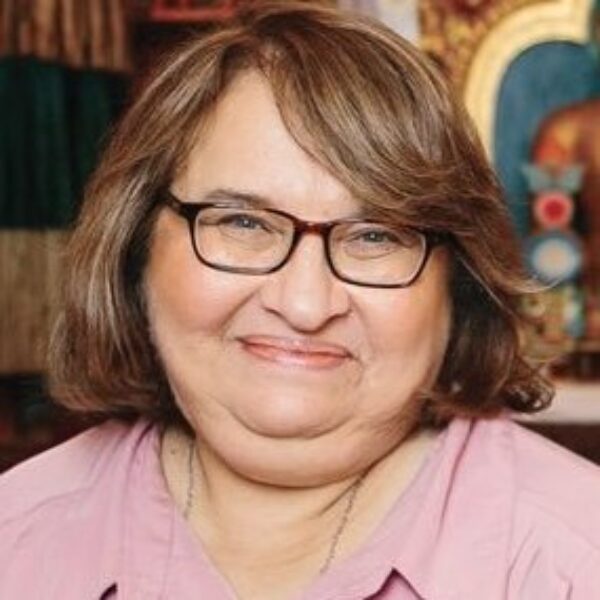
Image by David Yerga Acedo/Flickr (CC BY-NC-SA 2.0).
The Enmity Remained: Negating the Possibility of Change
I clearly remember the Cuban missile crisis from my childhood. It was a 13-day confrontation between the U.S. and the U.S.S.R. over Soviet ballistic missiles deployed in Cuba. I remember watching it play out on TV as I became increasingly haunted by the depiction of possible nuclear devastation. It was October 1962, and I was 10 years old.
My mother had died the year before, and I was living with my paternal grandparents. Disruption and death and loss already felt like they had taken over everything and re-forged my life. Now I got to contemplate absolutely everybody dying at any time and the world ending, as best as I could tell, each evening from broadcast news. Then, within a few weeks, the air of intense crisis ended, but the steady enmity remained.
My friend Josh remembers being told at school to run home in case of nuclear attack. Given that he lived four miles from the school, this was worrisome advice. I remember that in grade school, post crisis, we had to take part in an exercise that simulated a scenario of what we were supposed to do if an atomic bomb was about to be dropped on us by one of our enemies. Our mandate wasn’t to run, but to hide.
A siren would go off and everybody would crouch down under our desks with our hands over our heads. It was called “duck and cover.” Mine was the first generation brought up within the awful specter of mutually assured destruction. It was always clear to me, despite what anybody said, that a desktop wouldn’t be enough protection.
In the late eighties I travelled to the Soviet Union to teach meditation. It was still considered illegal to teach meditation in those days, so my colleague Joseph Goldstein and I went as part of a tour group. We even brought his mother along as cover.
Every afternoon he and I would peel off from the group and go to someone’s living room with a translator, and teach. As we moved around — talking, listening, sharing a meal when someone could find enough food — I found myself thinking, “Where’s the enemy? What happened?” During my entire childhood I was taught to regard these people as the “other,” the enemy. Now, suddenly, they were friends. Many of them could have been one of my cousins. Where did the unyielding “enemy” go?
I remember the Dalai Lama, quoting Santideva, an eighth century Tibetan sage say:
“Friends become enemies and enemies become friends.”
We live in a pretty molten reality — personally, collectively, geopolitically — lots of changes, all of the time. We see this within any long enough span of time.
I think it is true that in the reality of our lives some might wish to harm us. As wise human beings, we should try to avoid them or do anything we can do to null their power. I’ve heard of the Dalai Lama, for example, telling a friend with a mentally ill mother who had in the past tried to harm her to open her heart completely to her mother and offer her lovingkindness and compassion — but from a distance. That was a stunner. The Dalai Lama advising clear boundaries and self-protection? Well yes, but from a place of wisdom and compassion, rather than hatred and disdain. The wisdom and compassion provide their own powerful energy and give us strength to act.
Still we do ourselves and others a disservice by negating any possibility of change, or even by discounting the poignancy of changes not reached for. Life itself is change, and the rigidity of classifications is an attempt to deny that. In the end, it proves undeniable, so we have expended an awful lot of energy towards trying to keep frozen what is destined to move, shift, and alter.
The agreement reached in 2014 between President Barack Obama and President Raul Castro to begin taking steps to normalize relations between the two nations has regularly been termed the “Cuban thaw” by the media. I like that the word “thaw” is often being used (in contrast to something deeply frozen and static). More recently, in July of 2015, Cuba and the U.S. restored diplomatic relations, which had been severed in 1961.
Desktops won’t protect us from nuclear catastrophe, nor will running home for four miles as ballistic missiles rain down. Wisdom tells us that life is change itself and change is life itself. Working to not be stuck in rigid categorizations or harshly frozen into positions that have become habitual, inflexible postures likely has a much better chance.
This whole time of rapprochement with Cuba has reminded me of an incident many years ago. The Air Force was proposing to construct a Ground Wave Emergency Network (GWEN) tower near Barre, Massachusetts, where I live. It was explained to the local population that the tower could function to support communication in the event of a nuclear holocaust. One of my friends wrote a letter to the editor of our local paper, cogently suggesting, “Surely the time for communication isn’t post nuclear holocaust, it is now.”
